Above is a version of John William Waterhouse’s The Flower Picker. In J.W. Waterhouse (2002, Phaidon Press), author Peter Trippi tells us that Waterhouse painted at least four versions of this work.
“Waterhouse employed looser handling to make at least four depictions of a girl leaning over a fence to pick flowers. There is no evidence that Waterhouse exhibited this beautiful series, which unites his interest in flower-picking, arching bodies and open meadows.”
Peter Trippi’s comments also point out that this is not unusual since Waterhouse often ‘re-orchestrated motifs’ such as in Windflowers and Boreas (both paintings can be seen in The Winds of Waterhouse).
I believe these versions of The Flower Picker are all painted by Waterhouse:
Notice the differences in the landscapes. This is also explained by Trippi’s observation that “Early in the 1900s, Waterhouse painted his background landscapes in diverse manners, apparently for no reason other than his own delight.”
There have been comments online about the signature differences in each version of The Flower Picker. In one, the signature is painted on the fence at an angle. In another, it runs vertically up the fence post.
The vertical signature may seem curious if we only focus on the fact that the direction is not one usually used by the artist. However, I don’t think the fact that it’s vertical is what’s important about this signature. If he never signed any other painting vertically, that still doesn’t mean that this is not Waterhouse’s work. Why? Because in signing vertically, he’s following the line of the fence post. Now this is a very Waterhouse thing to do. You see it often in so many of his works. Ever looked for one of his signatures and not been able to find it right away? Look again. His name is often seen following a crack in the floor, written on a piece of furniture, or added to a piece of architecture.
Where is the signature in Saint Eulalia?
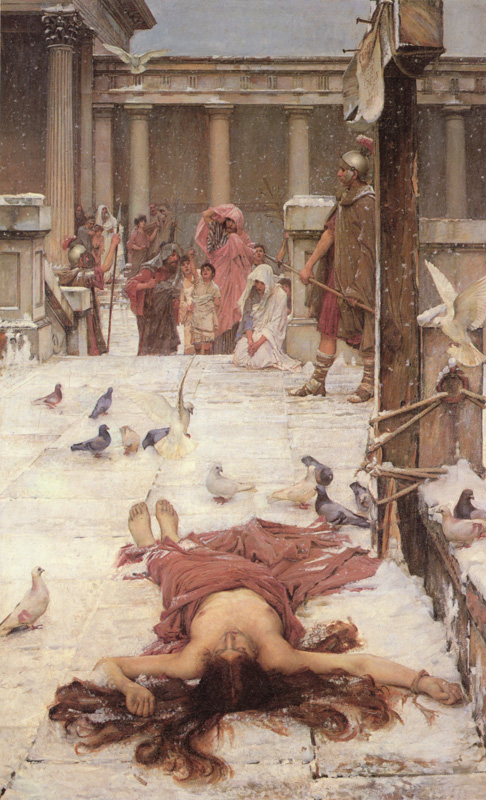
Look at the stone wall next to her body, directly under the pigeons.
There it is, following the line of the stone in the same manner the Flower Pickers signature follows the fence post.
In After the Dance, the signature appears on the tile floor.
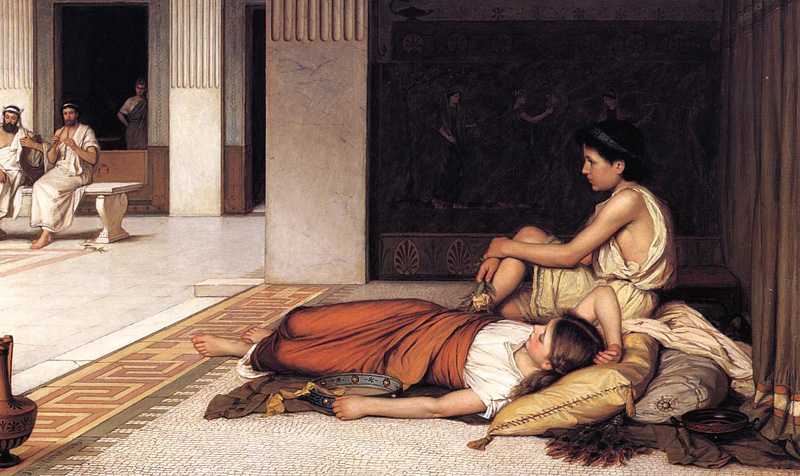
In The Household Gods, the signature is on a piece of furniture behind the kneeling girl.
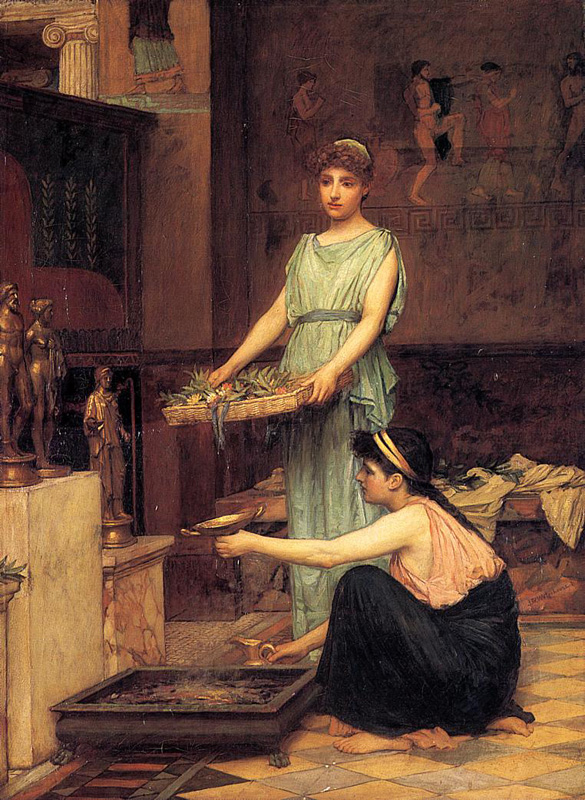
In The Favourites of the Emperor Honorius, the signature follows the seam of the tile.
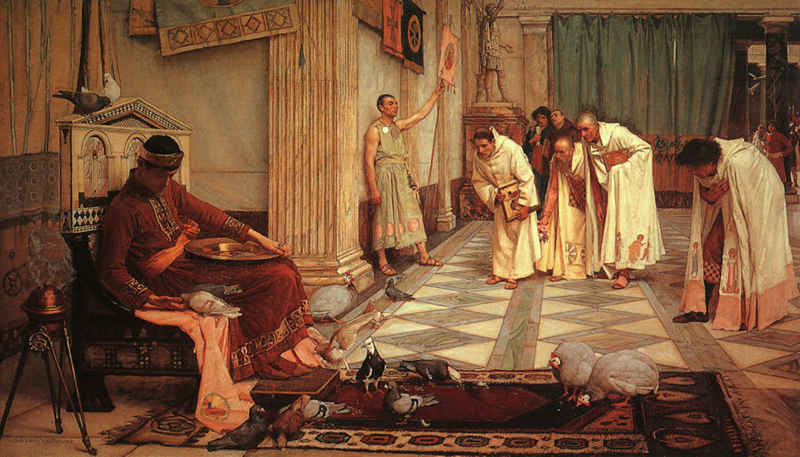
In A Roman Offering, the signature follows a crack in the pavement.

In Resting it appears on the wall, almost as if it is graffiti.
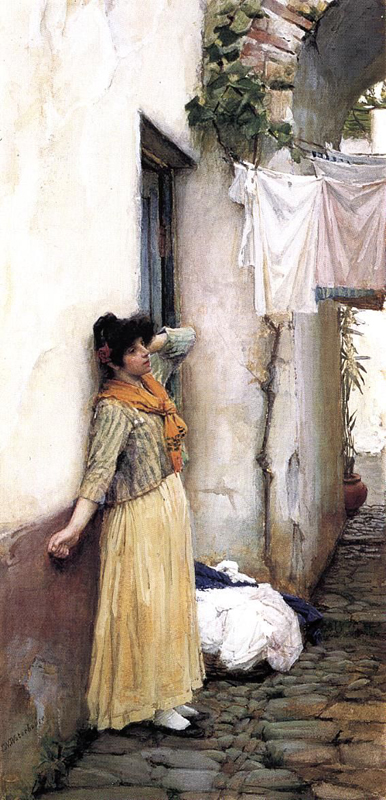
In Circe Offering the Cup to Odysseus, the signature is on the bottom of the stone floor which holds Circe’s throne.

In Ariadne, the signature can be seen on the stone wall behind Ariadne, lower right.
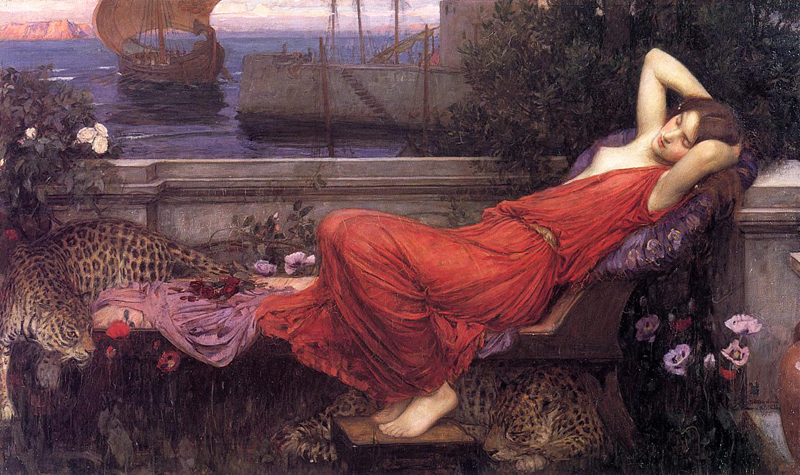
In Jason and Medea, the signature is on the bottom of the stone bench Jason sits on.
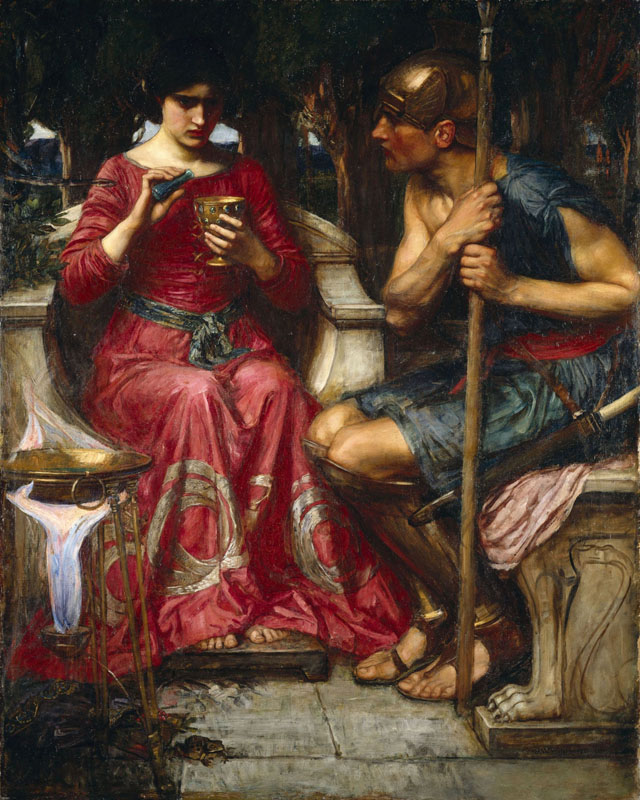
In A Tale from the Decameron, the signature follows the bottom stone step.
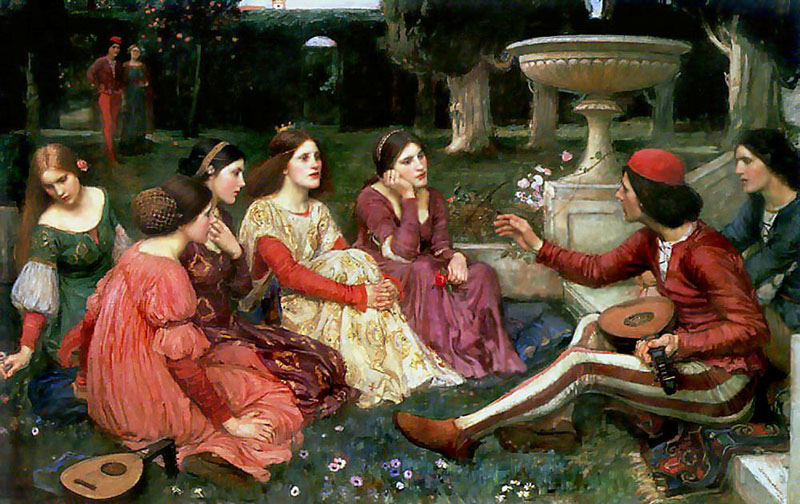
There are probably other examples that I haven’t found yet and, honestly, looking for this type of Waterhouse signature has become a bit of a fun diversion. If you see any others, please let me know.
While I think most of his signatures are pretty straightforward, these are excellent examples of the artist having a little fun. Whether it was for his own amusement or for the benefit of the viewer is anyone’s guess.

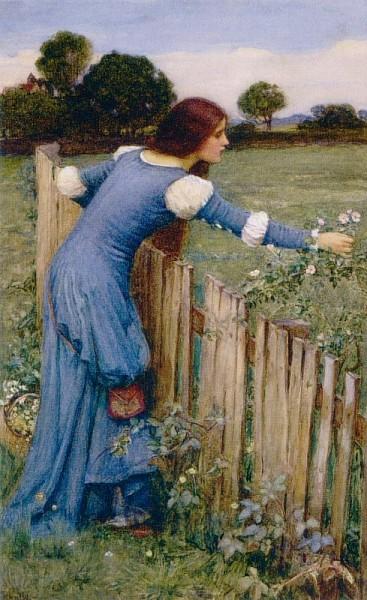
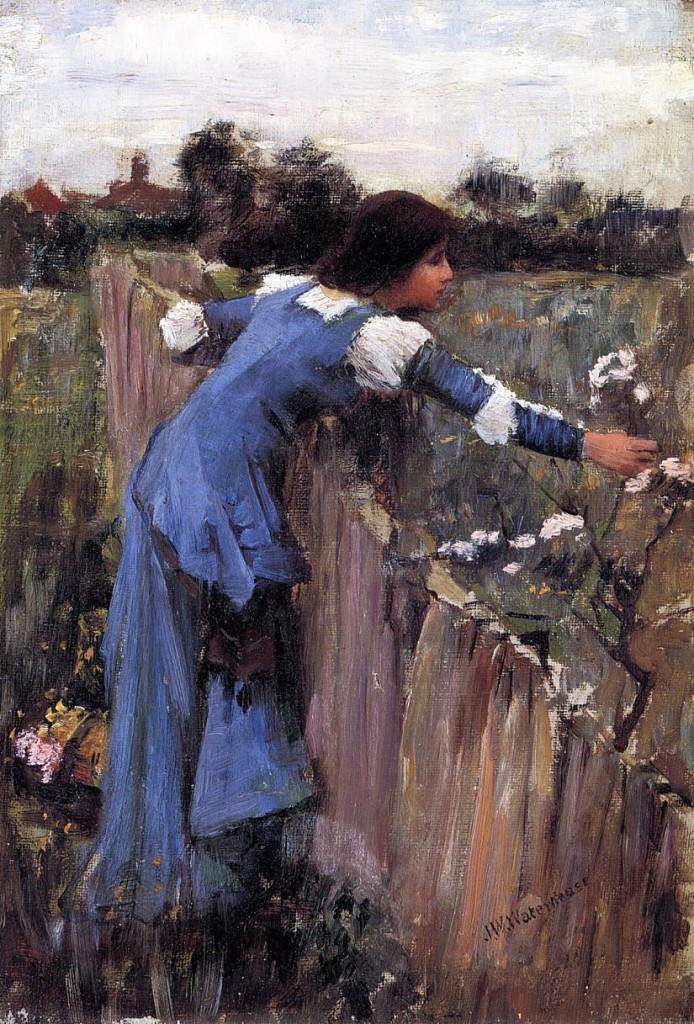
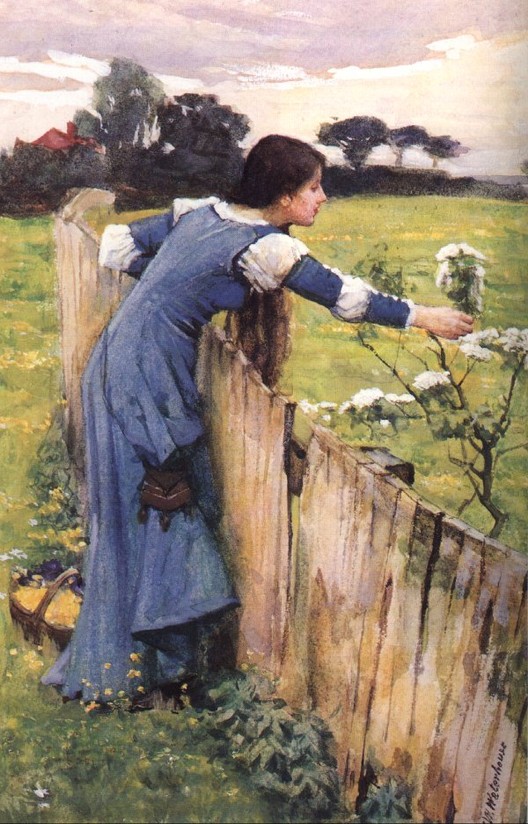
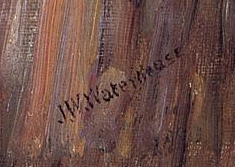
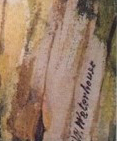
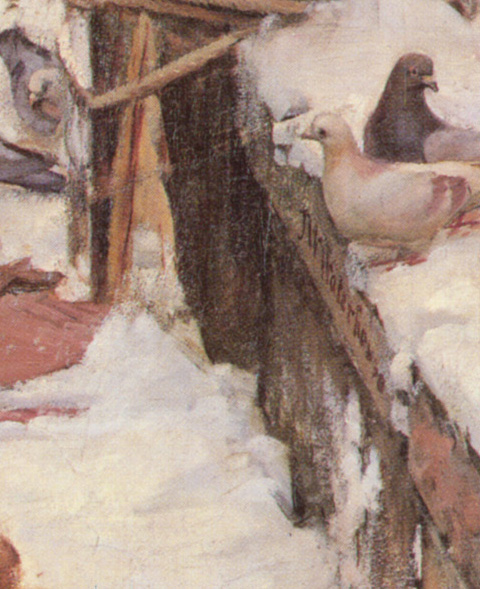

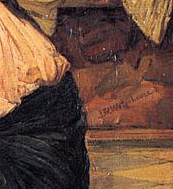
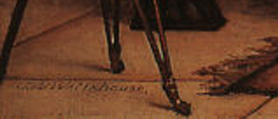
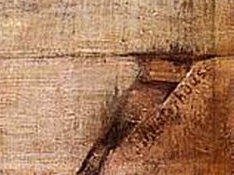
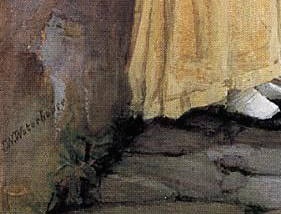
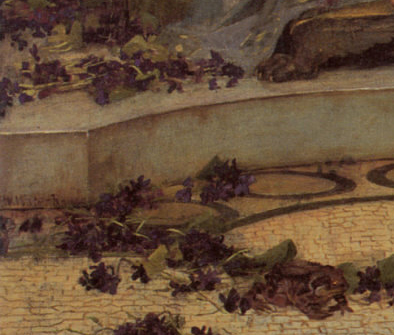

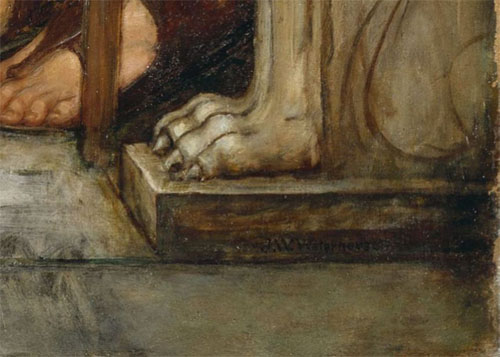
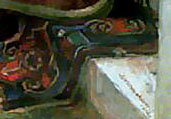
An excellent article, dear Stephanie. I do hope the extremely rude individual on Facebook reads this! 😉
Dear Stephanie
I think ‘spot the signature’ is a nice way to while away a few hours – I’ll be looking at Waterhouse’s work afresh now! I really enjoyed this post.
Best wishes
Ellie
Great stuff loved this post as always
Sorry Stephanie wrong name on my post
I love Waterhouse. This is such a great blog, I always enjoy your posts!
Hi, I really enjoyed your article, I love the way some of the pre-raphaelites hid their signatures , I especially enjoyed searching for Holman Hunts marks at a recent visit to the Ashmolean museum, I wonder, do you know if Waterhouse ever used a monogram such as a double WW as a mark of his work? I have seen this mark in a pre-raphaelite style portrait recently, I would very much appreciate your comment, thank you